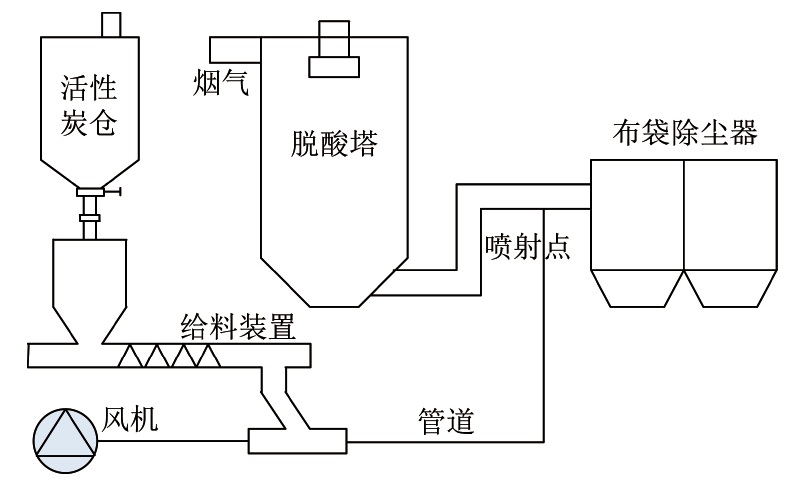Research progress on synergistic removal of multi-pollutants from municipal solid waste incineration flue gas in China
 2023 No. 06
2023 No. 06
 665
665 433
433

Citation format:

Authors:
- QUE Zhengbin
- LI Debo
- XIAO Xianbin
- LIU Pengyu
- CHEN Zhaoli
- CHEN Zhihao
- FENG Yongxin

Unit:
- National Engineering Laboratory of Biomass Power Generation Equipment,North China Electric Power University
- China Southern Grid Power Technology Co.,Ltd.,
- College of Power Engineering,North China Electric Power University

Abstract:
The technology of pollutant removal from municipal solid waste incineration flue gas in China are becoming more and more mature, but there are some problems with complex system and high cost. If the collaborative removal technology of multi-pollutants in flue gas can be adopted to replace two or more removal technologies in the existing process, the process system can be effectively simplified, the occupation area can be reduced, and even the cost of pollutant removal can be reduced. The cooperative removal technology of multi-pollutants from municipal solid waste incineration flue gas in China was summarized and discussed from the perspectives of removal principle, research progress, technological process, industrial application and application effect. The main advantages and disadvantages are as follows: the low temperature plasma cooperative removal technology has strong adaptability to flue gas, which can remove many kinds of flue gas pollutants such as NOx, SO2, HCl, Hg0, dioxin and so on, with high efficiency, but the equipment cost and the operation power consumption are high. The synergistic removal technology of carbon-based materials can also remove a variety of flue gas pollutants, and can recover resources by desorption and regeneration, but the removal efficiency is low and there is a risk of secondary pollution. The synergistic oxidation removal technology is mainly aimed at NOx, SO2 and HCl pollutants, which requires the process to be set up after dust removal, and mainly has the problems of low denitrification efficiency and difficulty in treating wastewater products. The synergistic removal technology of SCR denitrification is an improvement of SCR catalyst, which requires a high cost of catalyst, but the removal efficiency of Hg0 and dioxin is not high, and affects the denitrification process and the treatment of scrapped catalyst. the synergistic denitrification technology with composite catalytic media has better removal effect on dust and dioxin, but the cost of filter bag is relatively high. Other technologies, such as the synergistic removal of metal compounds by adsorption/oxidation, currently have relatively few research applications. Based on the current development of collaborative removal technology, it can be concluded that cost and removal efficiency are still the main factors limiting the application of technology, and it is still necessary to promote technology to reduce cost and increase efficiency, and further develop and mature. In addition, due to the differences in physical and chemical properties of different pollutants, there is a phenomenon of mutual influence in the process of collaborative removal, but the current research is less involved, and further research is needed to avoid the phenomenon of competition and suppression,as far as possible to achieve mutual promotion and collaborative removal.

Keywords:
- urban household waste
- burn
- smoke pollutants
- collaborative removal
- industrial applications

Citation format:
通讯作者:李德波(1983—),男,湖北宜昌人,教授级高级工程师,博士。E-mail:ldbyx@126.com

Chart:

Articles:

-
Executive director
China Coal Science and Industry Group Co., Ltd
-
Sponsored by
Coal Science Research Institute Co., Ltd
Coal Industry Clean Coal Engineering
Technology Research Center -
Editor in Chief
XIE Qiang
-
Vice Editor-in-Chief
YU Chang
SHI Yixiang
ZHAO Yongchun
DUAN Linbo
CAO Jingpei
ZENG Jie -
Publication Frequencies
Monthly
-
ISSN
1006-6772
-
CN
11-3676/TD
Covered by
- CSTPCD
- RCCSE(A+)
- AJ
- EBSCO host
- Ulrichsweb
- JST
- Scopus
Contact us
New Media
-
 Meichuanmei
Meichuanmei -
 Clean Coal Technology
Clean Coal Technology -
 Online Journals
Online Journals









 Submission system
Submission system Copyright agreement
Copyright agreement Instructions for authors
Instructions for authors